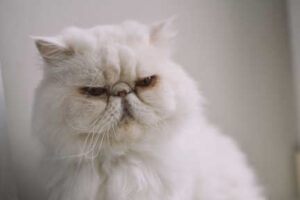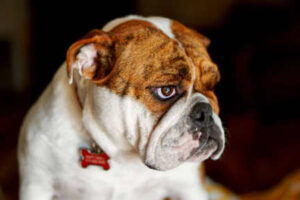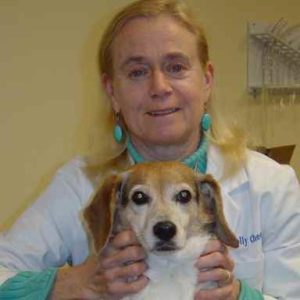The Vet Is In:
Brachycephalic Dogs and Cats – Cute But “Smothering”

In the long history of human, canine, and feline evolution, our ancestors found certain dog and cat features to be so appealing that they selectively bred them for many generations to exaggerate their utility or their “cuteness,” with no regard as to whether the altered anatomy would prove beneficial or deleterious to a future family’s companion animal. In the world of dog breeding, we created and physically altered the English Bulldog, French Bulldog, Cavalier King Charles Spaniel, Pug, Pekinese, and Boston Terrier, (to name a few: English Bulldogs are the most abnormal.) Similarly, we created Persian cats whose faces became increasingly flattened through selective breeding so as to exaggerate the brachycephalic (short-muzzled) shape of their skulls and their exceedingly narrow airways.

Though very appealing to humans, these breeds are plagued by the abnormal anatomy that comes from breeding for the flat-faced, no-nosed appearance, especially for dogs. The breeds cited above almost always show abnormal respiratory patterns and sounds that are not recognized as a health issue by the pet parents, but rather are seen as “cute.” However, an examination of the respiratory system may reveal an elongated soft pallet, everted laryngeal saccules, narrowed nostril openings, all combining to make a dog or cat who has great difficulty in breathing, not to mention exercising. Many cases require surgical intervention.
The English Bulldog, being the most extreme canine breed for brachycephaly, has such a short nose, flattened face, and short bowed limbs that he/she literally cannot swim: he/she simply cannot keep the nostrils open above the water level, thereby permitting water to drain into his/her lungs no matter how much he/she struggles. Note: this rarely is mentioned by the breeder eager to sell pups.
 NYSHA hopes that breeders will be encouraged to stop breeding the dogs and cats with extreme brachycephalic features to reduce the suffering the animals must experience. We encourage our readers not to acquire these animals who have been bred in this extreme form, so as to reduce the demand and the breeding.
NYSHA hopes that breeders will be encouraged to stop breeding the dogs and cats with extreme brachycephalic features to reduce the suffering the animals must experience. We encourage our readers not to acquire these animals who have been bred in this extreme form, so as to reduce the demand and the breeding.
Holly Cheever, DVM
NYSHA’s VP, Dr. Holly Cheever, is a partner in a small animal practice, the Village Animal Clinic, in Voorheesville, NY. She sits on several boards for animal issues, is a speaker and consultant across the nation, and has testified before Congress about animal abuse in circuses, as well as in New York City regarding the carriage horse trade.
New York State Humane Association Humane Review, Vol.XXXVIII, Fall 2021.